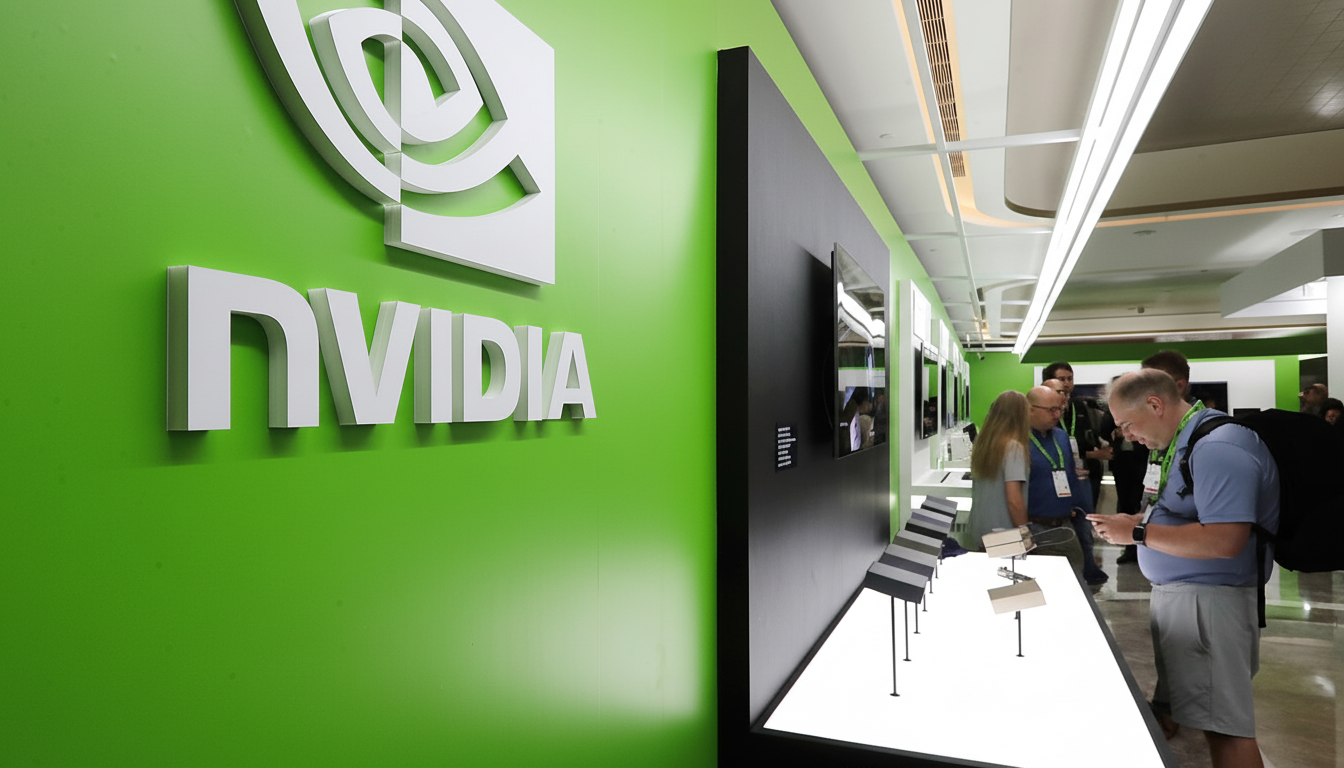Nvidia has set a record no other listed company has ever accomplished, reaching an all-time high of over $5 trillion in market value as demand for the chips driving artificial intelligence remained strong. The company’s stock surged by 5.6 percent to an intraday peak of approximately $212.19, continuing a trend that has already catapulted earnings by more than 50 percent this year and had previously smashed the $4 trillion level just six months before. But the $5 trillion milestone demonstrates just how crucial Nvidia’s GPUs are to AI infrastructure. The company’s hardware, networking, and software stack underlie the largest language model training and scaling of inference tasks in most modern AI and bioinformatics data centers, and the supply of GPUs remains inadequate.
Why Nvidia’s valuation surged amid sustained AI demand
Nvidia’s power stems from a mix of silicon and software. The top accelerator for GPUs relies on CUDA, cuDNN, and an extensive toolchain that has taken years to master.

On the silicon side, high-bandwidth memory and advanced packaging have been the primary competitive areas. Indeed, TrendForce and SemiAnalysis have cited HBM and TSMC’s CoWoS packaging constraints as the key bottlenecks. These difficulties exacerbate the situation and increase pricing power. The networking company acquired by Nvidia, Mellanox, with its InfiniBand and, increasingly, Ethernet, is an element of this dynamic.
Meanwhile, hyperscalers and AI labs are in a capital-expenditure arms race. As described by reports from Goldman Sachs and Dell’Oro Group, there has been a multi-year wave of AI infrastructure spending. For example, cloud providers and enterprises are busy building out tens of thousands of GPU nodes to meet the accelerating demand for model training and inference.
The numbers behind Nvidia’s growing AI data center lead
Data center growth to date has become Nvidia’s growth engine, contributing the vast majority of revenue over the past year, according to the company, as demand for accelerators outpaced supply. CEO Jensen Huang recently discussed an industry pathway toward hundreds of billions of dollars in AI chip sales, outlining pipelines that include seven new U.S. supercomputers, spread across security, energy, and scientific research, each requiring thousands of GPUs.
The company has also engaged in strategic investment and ecosystem-wide bets. According to Nvidia’s latest filing, it invested $1 billion in Nokia, designed to help enable AI-native 5G-Advanced and future 6G networks on Nvidia platforms. It continues a large-scale collaboration with the world’s leading AI developers, stating publicly that it will sign up to deploy up to 10 gigawatts of Nvidia systems with partners working on their frontier models. These are signals that explain the pace: a leap to $4 trillion, and now $5 trillion, driving a scramble to acquire supplies to catch the next wave of model training and AI-assisted services.

Competitive pressures and policy crosscurrents for Nvidia
The runway is not uncontested. AMD’s MI300 platform has been winning design slots, and big cloud providers continue to push custom silicon such as Google’s TPUs and Amazon’s Trainium and Inferentia. For Nvidia, the differentiation hinges on total system performance, software maturity, and time-to-solution — areas where its installed base still gives it an edge.
Geopolitics and regulation remain wild cards. Export controls on advanced chips to China, potential carve-outs, and any new bilateral tech agreements could materially shift demand. Analysts at Bloomberg Intelligence and policy think tanks have noted that even modest rule changes can ripple through supply chains and reorder quarterly shipment priorities. Supply-chain execution also matters. TSMC’s pace of CoWoS expansion, HBM output from Samsung, SK hynix, and Micron, and global substrate availability will determine how quickly Nvidia can translate orders into revenue.
What a $5 trillion market cap signals for global markets
At $5 trillion, Nvidia’s valuation eclipses the market capitalization of most national exchanges. World Federation of Exchanges data suggests only the United States, China, and Japan host equity markets larger than that figure. The comparison is an imperfect one but captures investor conviction that AI infrastructure is becoming a foundational layer of the global economy.
It also reframes sector leadership. Nvidia’s worth now rivals or exceeds longtime megacap leaders across consumer tech and software while remaining rooted in semiconductors — a category historically viewed as cyclical. The shift reflects a market belief that AI demand is of a more lasting nature, not just a transient upcycle.
Key developments to watch as Nvidia enters its next phase
- Blackwell shipment timing, gross margins as supply loosens, and how inference economics evolve as models move from training to real-world workloads.
- How quickly Nvidia’s software and services layers — Omniverse, CUDA libraries, and cloud offerings — deepen recurring revenue.
- Energy and infrastructure constraints, as power availability becomes as critical as chip availability for deployment velocity.
The Nvidia $5 trillion moment is a snapshot of a straightforward fact. AI is turning technology into a platform, and the corporation that supplies the shovels for that gold rush is at the heart of the industry’s most powerful tale.

